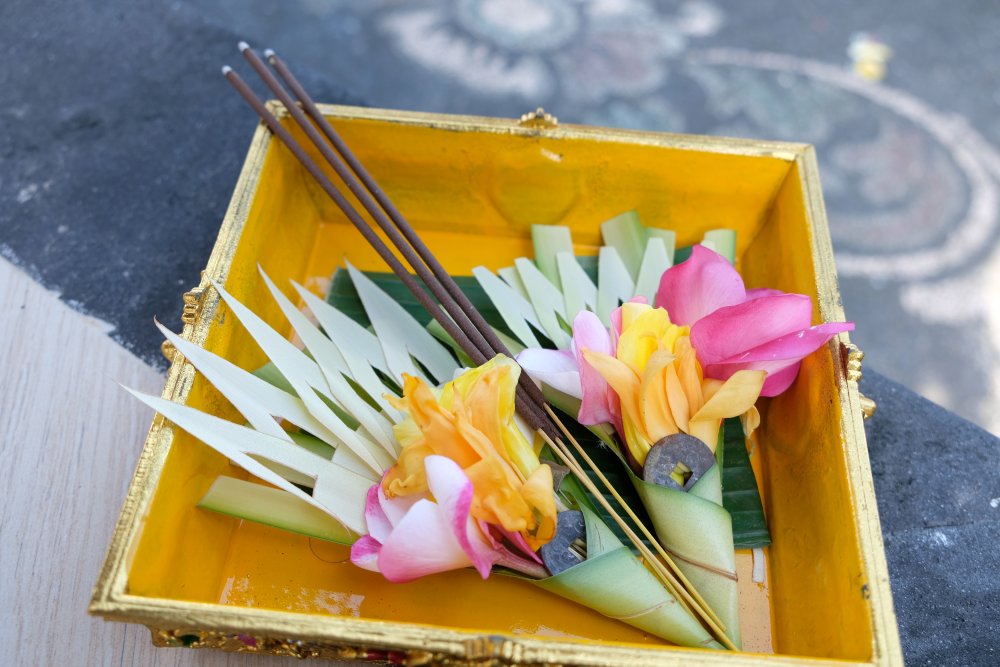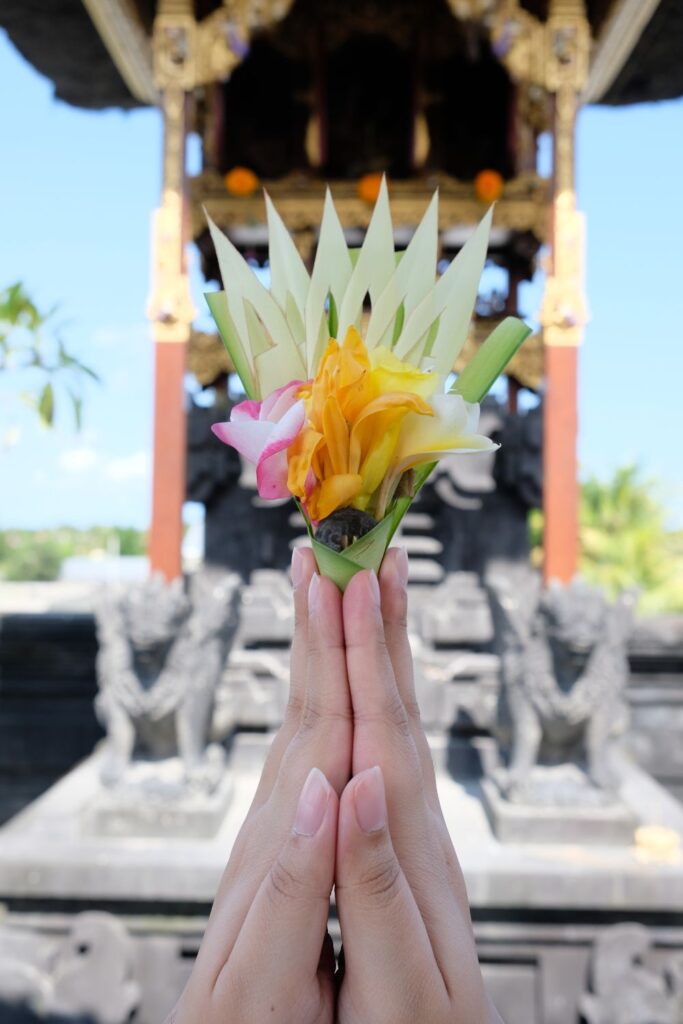
Balinese people are known for their meticulous attention to detail in their worship practices. There is a ceremony for so many aspects of life in Bali, and each ceremony will have very specific requirements. This is particularly true when it comes to certain rites and offerings, all must be executed with precision, all items present! One mandatory item in worship is the unique kwangen offering.
Kwangen comes from the word ‘wangi’, which means fragrant or aromatic. Therefore, kwangen can be interpreted as something fragrant used to worship Ida Sang Hyang Widhi Wasa (Almighty God) and all of God’s subsequent manifestations.
Kwangen is mentioned as a symbol of “Om Kara” or “Ongkara” which is a sacred syllable or pranawa symbolising God. This aims to emphasise that God is beautiful, holy, and fragrant, thus should be worshiped and revered.

The shape of this offering is small and triangular, an intricate and beautiful display that somewhat resembles a bouquet. The bottom is pointed, and its top looks like a blooming flower. Its fragrant smell comes from the various flowers filled inside the offering.
The kwangen is made of six components: a kojong, a cone-like vessel made from banana leaves; a pis bolong, a holed coin; a plawa, or leaf; a porosan silih asih, or betel leaves tied together; a sampian, fan-like shape depicting cili made from coconut leaves; and fragrant flowers like pacah (water jasmine), frangipani, and sandat (ylang-ylang).
To make this fragrant offering, at first the banana leaves must be formed into a kojong. Then, each of the components will be arranged inside of the kojong to form a complete kwangen. Each kwangen component has a symbolic meaning as it is offered to the gods as a symbol of gratitude, devotion, and respect.









